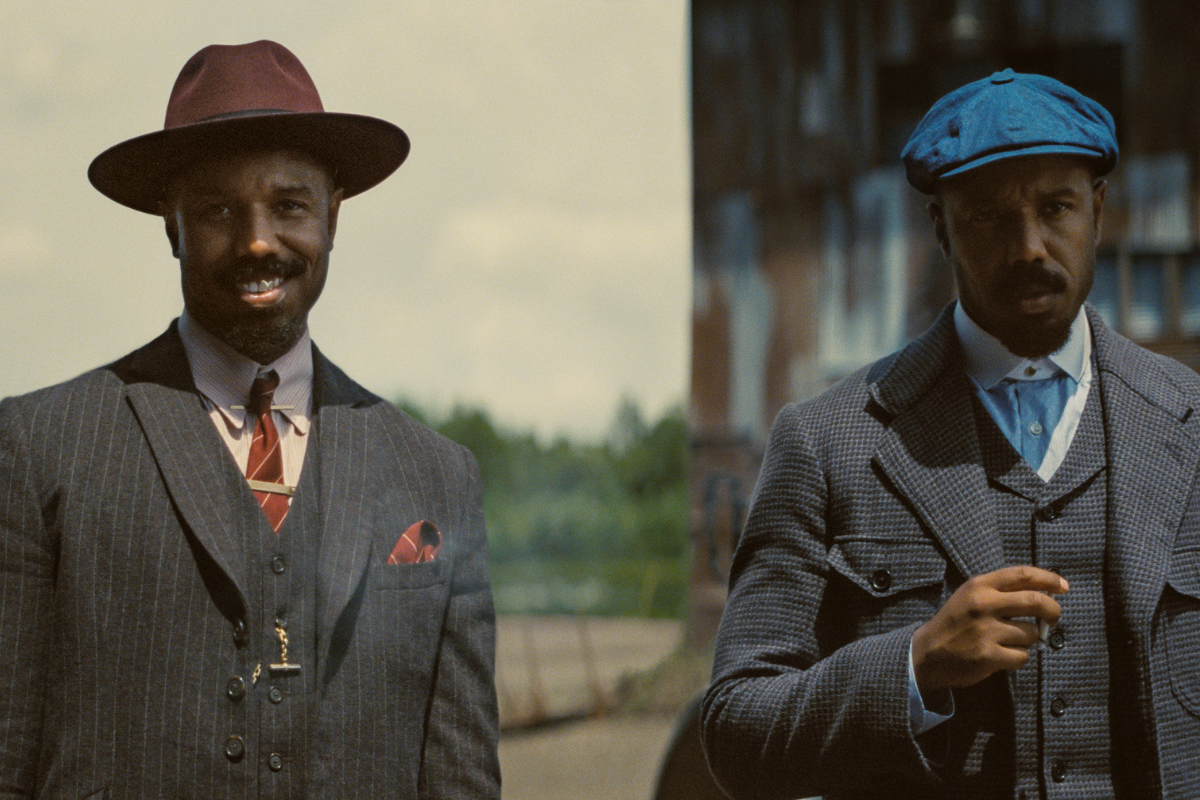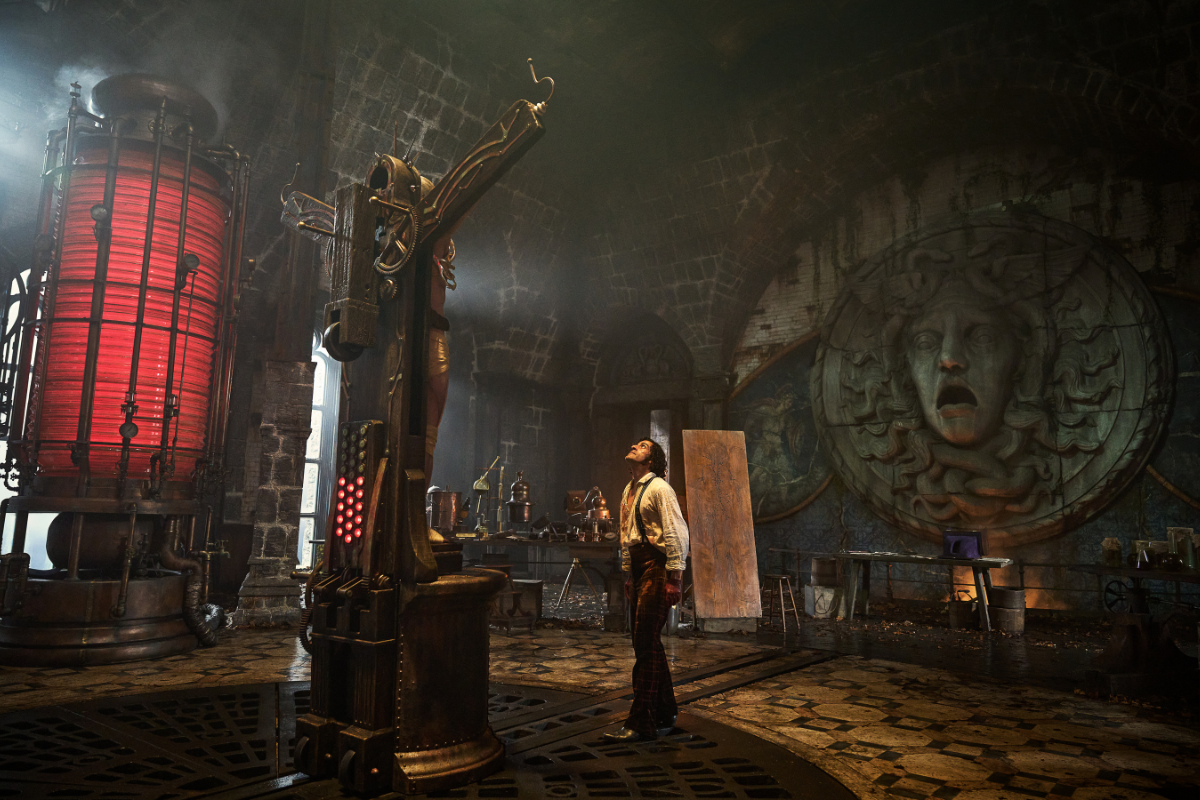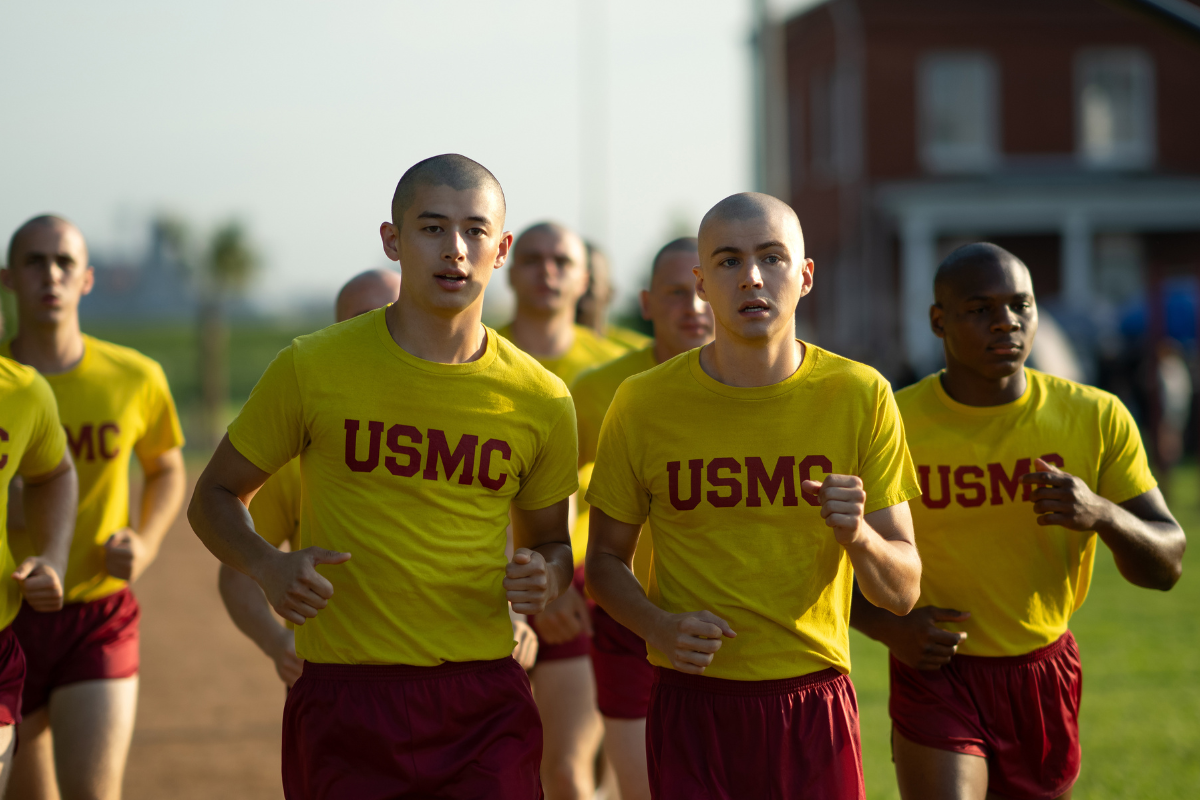Advanced Script Editing: Flashbacks & Voiceovers
Michael Tabb demystifies the use of flashbacks, why they don’t always work, and how to create more effective and compelling flashbacks and voiceovers in your screenplays.
The Prejudice Against Flashbacks and Voiceovers
There is absolutely nothing wrong with flashbacks and voiceovers. However, a pandemic of their misuse within the screenwriting community has created an unfortunate backlash against them. Script readers, story analysts, producers, and studio executives often dislike seeing these tools in scripts because they can sense that they aren’t working. However, most of these professionals didn’t take advanced screenwriting in film school, so they can’t put their finger on why. Well, I’m here to help. This article is for writers as well as the people who work with them. Let’s explore these unfairly persecuted tools of the screenwriting trade one at a time.
FLASHBACKS
For starters, a common misconception is that an opening scene that takes place before the main storyline commences should be formatted as a flashback. This is incorrect. A flashback only qualifies as such once a timeline has been established, thereby laying a foundation for the story to cut to a previous timeline (hence the importance of the route word “back” in flashback). Therefore, opening sequences like the 2009 Star Trek reboot does not open with a flashback because the timeline consistently moves forward.
Here are some situations that novice writers may think justify flashbacks:
1. To show, not tell
2. To illustrate an opinion or the theme
3. To explain a character’s state of mind (or to explain anything, for that matter)
4. To make a character more likeable
5. To express the heart of the past that led to this moment
6. To show someone else previously in the same situation
7. To clarify the meaning behind this moment in the script
8. To enhance the understanding of a story beat
9. To reflect on a tumultuous encounter or the present situation
10. To offer background on a relationship
11. To add conflict (which needs to be established in the present story)
12. To establish the past or history
13. To create instant motivation for a character
14. To show events of a true story
15. To ease tension (which is a bad idea, generally speaking)
A flashback can accomplish any of these things, but it will be a lousy flashback if any of those are the main reason for using a flashback. Nothing on that list is a good reason to utilize a flashback. When you consider that long list of ill-employed flashbacks as a group, perhaps you can see why they fall flat: They’re all about giving information. In and of itself, information doesn’t make for good storytelling.
An experienced cinema enthusiast may logically deduce that the things on the list are the natural result of flashback usage. This leads writers and directors to make flashbacks a go-to solution when they want to accomplish those things, thinking, “Hey, I can pull this off by plugging in a quick flashback.” The problem is that it’s not that simple. Without learning formally where, when, why, and how to properly use flashbacks without totally dissipating tension, the flashback will pull the plug from the tub’s drain and let out all the cozy, warm, soapy water. Nobody wants that.
Poorly written flashbacks drain the momentum and tension from a scene, especially if the stakes of the film are life and death. Those stakes disappear the second you go back in time because, obviously, the character survives the flashback. There is more and better danger, conflict, and tension in the present. Stay with that conflict and resist the urge to jump back in time just to merely give information.
If the flashback is setting something up, even without main characters in the scene, this boils down to exposition for the sake of exposition. That’s just bad writing. Information revealed must result from momentum, a precarious situation, and tension. In short, explanation and information are not good enough excuses for a scene.
The cardinal rule of flashback usage is that they don’t merely dole out information. Scripts shouldn’t backtrack to explain; instead, the writer must constantly move the story forward. There is a huge difference between what flashbacks can do and what they need to do, which is forward the story (i.e. the protagonist’s inner and outer journeys). To forward the story, it’s crucial to know where, when, why, and how to most effectively utilize flashbacks.
1. Character Arc: It illustrates the progress of a protagonist’s inner journey since the flashback moment occurred
2. Cause & Effect: It affects the present outer journey, impacting how the protagonist takes action from that moment forward
3. Now or Never: It cannot possibly take place even one second later in the script because it is required to progress the plot
4. Conflict: It holds paramount stakes and conflict with direct ties to the outcome of the present scene’s conflict
In short, every flashback should meet all of the high standards and qualifications of any other scene in the script. There are no exceptions to these requirements for any scene. The rules for what a scene must accomplish are uniform, regardless of chronology. If executed correctly with the writer following those rules, a flashback transcends exposition to become revelation. This is the goal of all great sequences, no matter the order they occur in your story or its timeline.
Let’s explore more deeply the four reasons to use a flashback:
1. Character Arc
By relating directly to the inner journey, the flashback should illustrate the internal growth the protagonist has yet to make (or it should comment on the state of that internal conflict). Flashbacks should advance the protagonist’s inner journey and personify their character arc, which is the process of overcoming their primary character flaw by story’s end.
For example, all the flashbacks in It’s A Wonderful Life contribute to the protagonist’s character arc. In fact, you can relate the flashbacks of this classic cinematic masterpiece to all the rules.
That said, note that flashbacks only reestablish the character flaw in the past. For any moment of truly deep and personal change, an audience must stay in the present timeline with the protagonist.
2. Cause & Effect
Flashbacks must forward plot and contain information that serves as a true key to accomplishing the outer journey (the physical, external mission and main plot) in the present. In It’s A Wonderful Life, the flashbacks reveal that the protagonist’s brother would be dead.
It must provide a clear, vital clue with which the protagonist can get out of a current and immediate predicament in the present, forwarding the scene and progressing the plot rather than merely commenting on backstory.
And speaking of current and immediate…
3. Now or Never
A proper flashback must be required in that exact moment to forward the story. It cannot come any later, because the story cannot move a fraction-of-a-second further without the information contained in the flashback. If the story cannot possibly progress without this clue, it is the only time in which to use it.
The flashbacks begin because George is on the brink of suicide in It’s A Wonderful Life. That is most certainly a now or never circumstance.
“Now or never” also means the flashback must be triggered by something that happens in the story’s present. Therefore, despite the fact that the flashback is in the past, the audience is reeling about how the flashback affects the present. Their minds and concern remain with the story’s present timeline predicament.
4. Conflict
All flashbacks should carry high stakes or the tension level in your story will drop. The penalty for this is loss of reader attention. Therefore, the flashback must hinge on one of two stake types, depending on film genre:
1. Loss of life (death)
2. Loss of love (heartbreak)
For example, stakes in a thriller, action, disaster, or horror film would be about life and death. Comedy, romance, or erotic stories would have love stakes. In short, whatever stakes you use in the story, apply those stakes equally to any flashbacks. Given suicide is on the line in It’s A Wonderful Life, the stakes can get no higher.
Meanwhile, the flashback should add to the fear or stakes in the present timeline that the reader expects to return to. Such a flashback adds anxiety to the present timeline during the flashback itself.
Flashbacks often destroy established pacing unless they follow the above rules. Think of a script’s story as a freight train, chugging along at full speed. After slamming on the brakes and going in reverse, trying to get the train back up to speed in the right direction takes too long and dislodges reader attention or interest. You’ve sacrificed momentum.
Know when to refrain from flashback usage. Since stakes are tough to maintain while switching timelines, find a creative way to convey information visually in the present wherever possible. Instead of a flashback showing that a character used to be incredibly influential and rich, you could show this with photographs of the character partying with past presidents, a bottle of Dom Pérignon in each hand. It’s still visual.
The “Show, don’t tell” excuse:
The rule of “show, don’t tell” is exceptionally misleading in this regard. When you are at a moment in the story, you need to choose what you would rather show. Just because it’s more physical to show a flashback of an exciting moment, that doesn’t make it more engrossing to the audience. Instead of showing some action that happened a while ago in the timeline, consider that it might be far more engrossing to show how the information is deeply affecting the characters in the present. You’re showing the more important emotional and visceral reaction to the news, keeping the audience in the hearts and minds of the characters we are following in the story.
Novice writers can learn from Good Will Hunting’s climactic session between Will and Sean, his psychiatrist. The script does not cut away from the dramatic moment to a flashback of Will’s father beating him with a wrench. The audience is grounded in the moment with Will as he faces his horrific past. That moment is about how someone lives with a past they cannot change. There is no reason to show the brutality in detail. The file pictures of bruises and list of injuries recited say it all. Flashing back for the sake of explanation, example, or mindset would only break the momentum and lessen the power of Will’s emotional breakthrough. Will opens his heart, lets go, and leaves barriers behind. Growth happens in the present.
This is also why there is no flashback in the first Top Gun film when Viper finally tells Maverick the truth about how his father died. The film isn’t about showing that history and the reasoning; it’s about the central character’s moment of discovery. It’s about Maverick finding peace of mind upon learning that his father died a hero. The writers wisely chose to skip the action dogfight flashback showing his father’s death. This is Maverick’s movie, not his dad’s. We stay with Maverick.
I’d bet that for every time a writer sagely chose not to use a flashback, someone along the way urged the flashback option under the auspices of the old “show, don’t tell” adage. Though I’m a huge “show, don’t tell” proponent, a flashback is often one of the rare occasions when flashy and cinematic “showing” is a swing and a miss. If the purpose of the flashback is to get an emotional reaction from the character in the present, the present is where we should stay. Focusing on the emotional fallout and coping with the memory in the present is showing; it’s showing the present story instead of a past story. The present is the story you want to tell; if that isn’t the case, you probably have serious revisions to do. This is why “showing” through flashbacks usually equates to exposition instead of forwarding story.
The same rules apply to flash-forwards. In Star Wars, Episode V: The Empire Strikes Back, Luke meditates with Yoda and sees the future. A cheap series of cuts to show the images in his mind would have broken the mood. What mattered is how those potential images emotionally impact Luke. They shake him. He loses his balance, and all the things he is levitating crash down. We stayed in the present with the protagonist to witness him being emotionally compromised. This personal rupture inspires Luke to abandon his training prematurely, sending him spiraling into a situation he is unprepared to handle.
Experienced writers don’t flash back or forward amid emotional transitions within the character in the present, because the audience needs to see that emotional transition. The character isn’t changing in the past, but in the present. Emotional moments should stay in the current timeline, whereas a beat about information may take a character to the past.
On the flip side, when a flashback is used correctly, the fewer lines of dialogue and the shorter the scene, the better. It should be visual and move quickly to maintain momentum. Consider the climactic revelation flashbacks in The Sixth Sense and The Usual Suspects. The fast-cutting series of shots reveal the key to moving forward, a key that can come no later in the story and should come no earlier. They don’t lower tension. In fact, they escalate it through the roof.
In The Usual Suspects, 90% of which is told through flashback, every return to the present is dramatically affected by the flashback preceding it. When executed properly, a flashback should trigger a moment in which the character having it has a story beat, possibly perception-altering. It’s a story beat plot realization, not an internal one. This is how big of a moment any flashback must be, given the above qualifications. You’ll also find these flashback usages in Swimming with Sharks and Reservoir Dogs.
Flashback Summary:
All the qualifications a scene must meet for inclusion in your script in the story’s present timeline also apply to flashbacks. Every scene exists for one purpose alone – forward the story. Flashbacks aren’t an exception to any rule. Information comes out in scenes, but is never the reason for one. Flashbacks are story beats like any other and must continue the momentum, advance the plot, contain equivalent stakes to the rest of the script, sustain continuity, prod the character arc, and happen now-or-never. I hope this clarifies why so many writers misuse flashbacks and how you can avoid those mistakes or spot them in others’ work.
VOICEOVERS
As with flashbacks, misuse of voiceovers (V.O.) has led to a strong trend in Hollywood against using them. A writer can therefore alienate a professional reader who catches a glimpse of one in a script.
Why do they take issue with voiceover?
Firstly, it pulls your reader out of experiencing the story in the traditional way by breaking the fourth wall. Speaking directly to the audience takes them out of the fly-on-the-wall vantage point and asks them to form a relationship with the narrating character. Sometimes that risk is worth it.
The biggest misnomer about voiceovers is that they exist to tell the story, but we show, not tell. Now, what we focus on while showing is an important lesson to learn (as explained above), but we do not use voiceover to tell story.
Voiceover should not be used to explain or justify. Those are also major no-nos and both of them are forms of telling instead of showing. Poor writers use voiceover as a copout from doing the arduous and complex work of layering in and revealing information in a visual yet logical way for the story. They just drop it into voiceover. That is laziness.
Voiceover should also never repeat or hammer home something already happening or being shown visually. For example, Casino abuses voiceover by regurgitating visuals. Such regurgitation kills story momentum and pacing and stinks of redundancy. In fact, when voiceover is used as commentary and is done correctly, it’s often contrary to the visual image, creating literary conflict.
The visuals should be self-evident without requiring verbal explanation. For the most part, trust your visuals, your readers, and your audience to understand the majority of those moments because otherwise you’ll be really hindering the pace of your script. If you have to “explain” anything in any kind of dialogue, voiceover or not, ask yourself: “Am I expertly telling the story visually? Can it be worded better or more succinctly to clarify the image?” Struggle and toil over the right wording. Before you explain anything, work on finding all the different ways you might show it. Voice over is no place to regurgitate what we’re already seeing.
We do not retread the same things we are already getting from the script in voiceover. No part of your script is there to be redundant. We use voiceover because it’s adding something totally new to the story through the voice and personality of that character.
1. Increasing tension
2. Reversing expectation (which is great for comedy) or creating meaningful juxtaposition
3. Defining an extremely unique character perspective that’s otherwise unattainable (usually the protagonist)
Number three is crucial. In a visual medium, voiceover has a very specific job in a screenwriter’s toolbox, which is to define a character’s unique personality, mindset, and voice – never plot. This locks readers into a perspective.
If you can get a true sense of a character through action and dialogue without voiceover, do it. Show the story visually. As with flashbacks, voiceover should never dump exposition or plot information. Just because voiceover can convey information doesn’t mean it should.
One way in which Casino’s voiceover usage distracts from story and flow is that it was for and by multiple characters, confusing the perspective of the story. You will notice that’s not the case in Scorsese’s superior film, Goodfellas.
Look at Kiss Kiss Bang Bang, Sunset Boulevard, or the biting tone of Double Indemnity for strong examples of how to properly use voiceover. Unsurprisingly, all three are in film noir style. This is the best-suited genre for voiceover, because so much of a great noir story is about secrets and misleading the audience. A lot goes unsaid. Characters are often tightlipped in these films. Voiceover then provides dynamic perspective and gets caught up in a web of deception, which adds to the mystery and confirms that the viewer should be suspicious. It can be an unreliable narrator.
Voiceover, done right, has so many amazing uses, and those uses can misdirect and build tension. The script should feel like its pace is constantly increasing. Voiceover used well provides insight, pathos, irony, and conflict. Used poorly it’s a repository for exposition, creative copouts, repetition, and redundancy. So, use it wisely, for it takes a great writer to always use it properly. It’s a sign of true mastery when done well.
WRAPPING UP
Long story short (too late), voiceovers and flashbacks are for the more advanced writers and when used well by skilled professionals, are endlessly valuable tools of the storytelling trade. There is nothing wrong with using them if used correctly, and the reason so many people don’t like seeing them is because so few actually use them well and properly. Be one of the greats to use them properly, and you illustrate your mastery over some of the most technically challenging tools of the screenwriting trade.
No gauntlet is being thrown down here. Voiceover and flashbacks are not necessary in the showing of most stories. Don’t force a square peg into a round hole. So, this doesn’t mean you should design a script just to use voiceover and flashback; it means, as with all specialty tools in the screenwriter’s arsenal, use them wisely in stories that need to be told.
I hope you’ve found this article informative. Feel free to register at www.MichaelTabbWGA.com, read about the book inspired by my Script magazine articles, Prewriting Your Screenplay: A Step-By-Step Guide to Generating Stories (for a limited time, get 20% off using code FLA40 at checkout), and follow me: Twitter: @MichaelTabb, Instagram: @MichaelTabbWGA, and Pinterest.
I do appreciate it. Thank you for reading!
Learn more about screenplay structure in Diane Drake's on-demand webinar, The Essential Elements of Screenplay Structure: Get Your Story Straight
Michael Tabb is a firm believer in giving back to fellow artists in an ongoing effort to constantly elevate the medium of visual storytelling through the exchange of free-flowing ideas. This column is one WGA writer’s perspective of entertainment from within the screenwriting trade, including craft as well as industry, occasionally separating conceptions from misconceptions. It’s part trade analyses and part opinion column. Writers are story surgeons. Scrub in and let’s dissect this living, breathing, evolving thing we do called entertainment writing. Read the book inspired by Michael's articles at Script Magazine Prewriting Your Screenplay: A Step-By-Step Guide to Generating Stories, and follow him on Twitter: @MichaelTabb, Instagram: @MichaelTabbWGA, and Pinterest.







